Growing Eggplant Successfully can feel like a real victory in the home garden! Have you ever dreamed of plucking glossy, deep purple eggplants straight from your own backyard, ready to be transformed into delicious baba ghanoush, eggplant parmesan, or a flavorful stir-fry? I know I have! But let’s be honest, sometimes those beautiful seedlings we bring home from the nursery seem to have a mind of their own, and achieving that eggplant abundance can feel a little elusive.
Eggplant, also known as aubergine, has a rich history, originating in India and making its way across the globe. For centuries, it’s been a staple in various cuisines, representing abundance and culinary creativity. But the journey from seed to table can be tricky, and that’s where this DIY guide comes in!
Many gardeners struggle with common eggplant problems like blossom-end rot, pest infestations, and simply getting their plants to produce a bountiful harvest. That’s why I’ve put together this collection of tried-and-true home gardening tricks and DIY solutions to help you growing eggplant successfully. We’ll cover everything from soil preparation and companion planting to natural pest control and harvesting tips. Get ready to unlock the secrets to a thriving eggplant patch and enjoy the satisfaction of homegrown goodness!
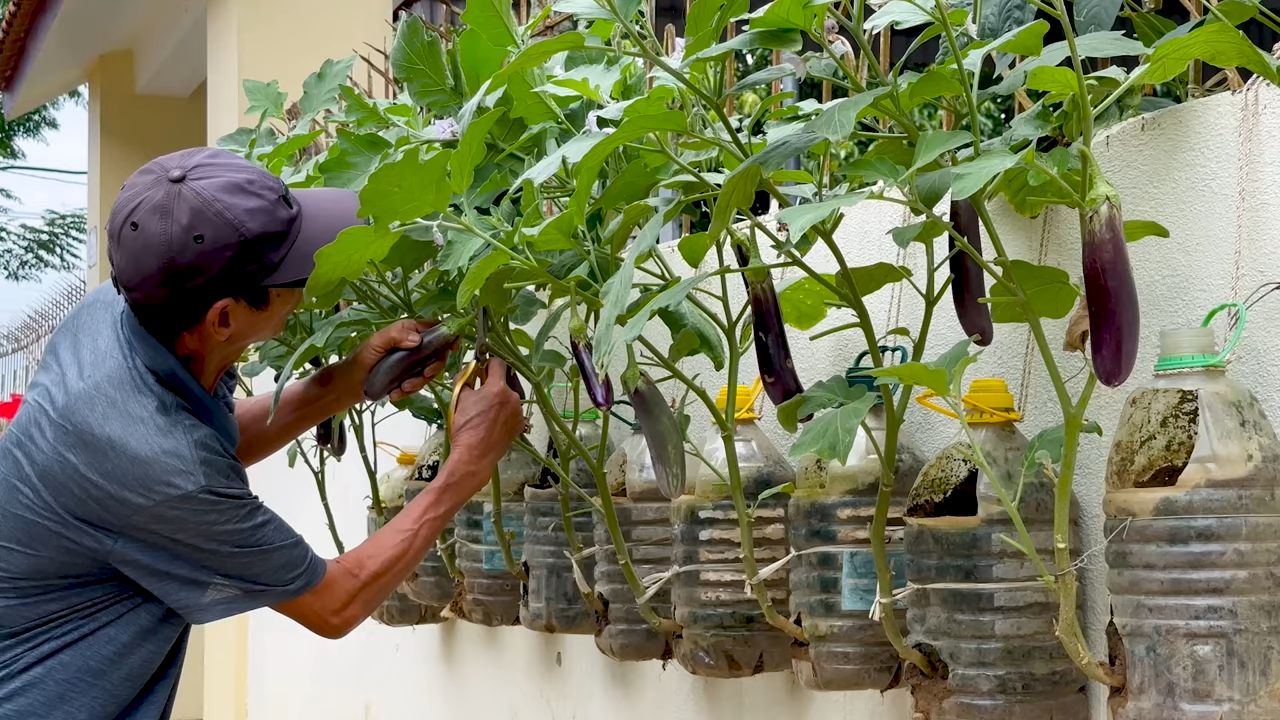
Successfully Grow Eggplants Yourself: Your Comprehensive DIY Guide
Hello garden friends! Eggplants, those beautiful, shiny fruits, are not only delicious but also a great addition to any vegetable garden. Many people think they are difficult to grow, but with a little knowledge and patience, you too can achieve a bountiful harvest. I’ll show you how it’s done!
The Basics: What Eggplants Love
Before we get started, let’s briefly understand the needs of the eggplant. They are little divas when it comes to the weather:
- Warmth: Eggplants love the sun and need temperatures between 21°C and 30°C (70°F and 86°F) to grow optimally. They do not tolerate frost at all.
- Sun: At least 6-8 hours of direct sunlight per day are a must.
- Soil: The soil should be well-draining, loose, and rich in organic matter. A pH value between 6.0 and 6.8 is ideal.
- Water: Regular watering is important, especially during fruit formation. But be careful: avoid waterlogging!
- Nutrients: Eggplants are heavy feeders and need sufficient nutrients, especially nitrogen, phosphorus, and potassium.
Phase 1: Preparation – The Foundation for a Bountiful Harvest
Proper preparation is everything. Here, I’ll show you how to do everything perfectly:
1. Choosing the Right Variety
There are countless eggplant varieties, from the classic purple ones to white, green, or striped ones. Choose a variety that suits your climate and preferences. Some popular varieties are:
- Black Beauty: A classic, reliable variety with large, dark purple fruits.
- Ichiban: An early variety with slender, elongated fruits.
- Rosa Bianca: A beautiful variety with light purple and white fruits.
- Thai Green: Small, green eggplants with a slightly bitter taste, ideal for Asian dishes.
2. Starting from Seed (or Buying Young Plants)
You have two options: either you start your eggplants from seed yourself, or you buy young plants at the garden center. I recommend starting them yourself, as you have full control and save money.
Starting from Seed: Step by Step
- The Right Time: Start the seeds about 8-10 weeks before the last expected frost. In Central Europe, this is usually in February or March.
- The Right Substrate: Use seed starting mix, which is low in nutrients and loose.
- Sowing: Fill small pots or seed trays with soil, press it down lightly, and sow the seeds about 0.5 cm (0.2 inches) deep.
- Watering: Water the soil gently, preferably with a spray bottle.
- Warmth: Place the pots in a warm place (24-27°C / 75-80°F) and cover them with a transparent film or a lid to increase humidity.
- Germination: The seeds should germinate after about 1-2 weeks. Remove the film or lid as soon as the first seedlings are visible.
- Light: Place the pots in a bright place, preferably under a plant light, to prevent the plants from becoming leggy.
- Pricking Out: As soon as the plants have 2-3 true leaves, you prick them out into larger pots (approx. 8-10 cm / 3-4 inches in diameter).
- Hardening Off: Before you plant the plants outdoors, you must harden them off. To do this, place them outside for a few hours during the day and bring them back in at night. Increase the time outdoors each day until the plants have become accustomed to the conditions.
3. Soil Preparation
Eggplants need well-prepared soil. Here’s how:
- Soil Analysis: If you are unsure about the condition of your soil, do a soil analysis. This way, you will know exactly which nutrients are missing.
- Loosening: Loosen the soil thoroughly, preferably with a digging fork or a spade.
- Improving: Mix compost, well-rotted manure, or other organic materials into the soil to enrich it with nutrients and improve drainage.
- Fertilizing: Fertilize the soil with an organic fertilizer that is rich in phosphorus and potassium. This promotes flowering and fruit development.
Phase 2: Planting – The Move Outdoors
As soon as the temperatures are right and the eggplant plants are strong enough, they can be planted outdoors.
1. The Right Time
Plant the eggplants only after the last frost (mid-May in Central Europe), when there is no more danger of frost. The soil temperature should be at least 15°C (60°F).
2. The Right Location
Choose a sunny and sheltered location. Eggplants need a lot of sun and warmth to grow optimally.
3. Planting
- The Planting Holes: Dig planting holes that are slightly larger than the root balls of the eggplant plants.
- The Spacing: Maintain a distance of about 45-60 cm (18-24 inches) between the plants and 75-90 cm (30-36 inches) between the rows.
- Planting: Carefully place the eggplant plants in the planting holes and fill them with soil. Press the soil down lightly.
- Watering: Water the plants thoroughly.
- Protection: Protect the young plants from snails and other pests. You can use snail collars or cover the plants with a net.
4. Supporting
Eggplant plants can bend under the weight of the fruits. Therefore, support them with stakes or a trellis.
Phase 3: Care – To Make Your Eggplants Thrive
Care is crucial for a bountiful harvest. Here are my tips:
1. Watering
Eggplants need regular watering, especially during fruit formation. It’s best to water the plants in the morning so the leaves can dry off by evening. Avoid waterlogging, as this can lead to root rot.
2. Fertilizing
Eggplants are heavy feeders and need regular fertilization. Fertilize the plants every 2-3 weeks with an organic fertilizer that is rich in potassium. You can also use nettle tea or compost tea.
3. Pruning (Suckering)
Eggplant plants form many side shoots. Remove the side shoots that grow below the first flower to concentrate the plant’s energy on fruit formation.
4. Pest Control
Eggplants can be infested by various pests, such as aphids, spider mites, or potato beetles. Check the plants regularly and combat pests early with natural remedies, such as neem oil or soapy water.
5. Disease Prevention
Eggplants can also be affected by various diseases, such as powdery mildew or gray mold. Ensure good air circulation for the plants and avoid waterlogging to prevent diseases.
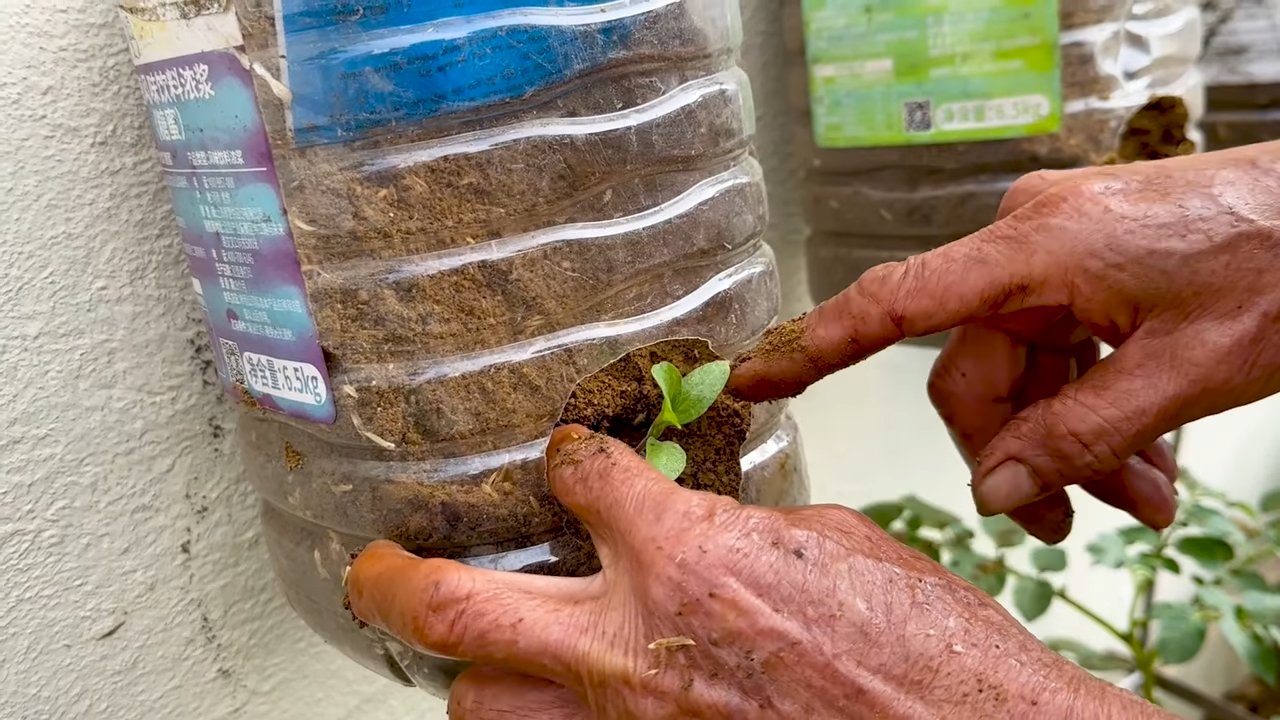
Conclusion
So, there you have it! Mastering the art of growing eggplant successfully doesn’t require a green thumb blessed by the gardening gods. It’s about understanding the plant’s needs, providing the right environment, and employing a few clever DIY tricks to give your eggplants the best possible start and continued support. From crafting your own nutrient-rich soil amendments to building simple, yet effective, pest deterrents, these methods are designed to empower you, the home gardener, to achieve a bountiful harvest.
Why is this a must-try? Because it’s more than just growing vegetables; it’s about connecting with your food source, reducing your reliance on commercially produced produce (often laden with chemicals), and experiencing the sheer joy of nurturing life from seed to table. Imagine the satisfaction of serving a delicious eggplant parmesan made with eggplants you personally cultivated!
But the benefits extend beyond the culinary. Gardening is a fantastic stress reliever, a great way to get some exercise, and a wonderful opportunity to learn about the natural world. And when you grow your own food, you’re contributing to a more sustainable and environmentally friendly lifestyle.
Don’t be afraid to experiment! Try different varieties of eggplant – from the classic Black Beauty to the slender Japanese types or the vibrant Thai green eggplants. Explore companion planting options to naturally deter pests and improve soil health. Consider using different types of homemade fertilizers, like compost tea or diluted fish emulsion, to see what works best for your plants and your soil.
Variations and Adaptations:
* Container Gardening: If you’re short on space, growing eggplant successfully in containers is entirely possible. Choose a large pot (at least 5 gallons) and ensure it has excellent drainage. Use a high-quality potting mix and water regularly.
* Vertical Gardening: For those with limited ground space, consider training your eggplant to grow vertically using stakes or a trellis. This not only saves space but also improves air circulation and reduces the risk of fungal diseases.
* Grafting: For advanced gardeners, grafting eggplant onto a more vigorous rootstock can significantly improve disease resistance and yield. This is particularly useful in areas with challenging soil conditions or a history of soilborne diseases.
* Season Extension: In cooler climates, start your eggplant seeds indoors several weeks before the last expected frost. You can also use row covers or a cold frame to protect your plants from late frosts and extend the growing season.
We encourage you to embrace these DIY techniques and embark on your own eggplant-growing adventure. The rewards are well worth the effort. And remember, gardening is a journey of continuous learning. Don’t be discouraged by setbacks; instead, view them as opportunities to learn and improve.
So, grab your seeds, prepare your soil, and get ready to experience the joy of growing your own delicious and nutritious eggplants. We can’t wait to hear about your successes (and even your challenges!). Share your experiences, tips, and photos with us in the comments below. Let’s build a community of eggplant enthusiasts and learn from each other! Happy gardening!
Frequently Asked Questions (FAQ)
1. What is the best time to start eggplant seeds indoors?
The ideal time to start eggplant seeds indoors is typically 6-8 weeks before the last expected frost in your area. This allows the seedlings to develop a strong root system before being transplanted outdoors. Check your local frost dates to determine the appropriate timing for your region. Starting them too early can lead to leggy, weak seedlings, while starting them too late can delay your harvest.
2. How often should I water my eggplant plants?
Eggplant plants need consistent moisture, especially during hot weather. Water deeply and regularly, aiming for about 1-2 inches of water per week. Check the soil moisture regularly by sticking your finger about an inch into the soil. If it feels dry, it’s time to water. Avoid overhead watering, as this can increase the risk of fungal diseases. Drip irrigation or soaker hoses are excellent options for delivering water directly to the roots.
3. What are some common pests that affect eggplant, and how can I control them?
Common eggplant pests include flea beetles, aphids, spider mites, and tomato hornworms. Regularly inspect your plants for signs of infestation. For flea beetles, you can use row covers or apply diatomaceous earth around the base of the plants. Aphids can be controlled with insecticidal soap or a strong blast of water from a hose. Spider mites can be managed by increasing humidity around the plants and using miticides if necessary. Tomato hornworms can be handpicked off the plants or controlled with Bacillus thuringiensis (Bt). Companion planting with herbs like basil or marigolds can also help deter pests.
4. How do I know when my eggplants are ripe and ready to harvest?
Eggplants are typically ready to harvest when they are firm, glossy, and have reached their mature size and color. The skin should be smooth and unblemished. Gently press the skin with your thumb; if it leaves a slight indentation that springs back, the eggplant is ripe. Overripe eggplants will become dull, soft, and seedy. Use a sharp knife or pruning shears to cut the eggplant from the plant, leaving a small stem attached.
5. What kind of fertilizer should I use for my eggplant plants?
Eggplant plants are heavy feeders and benefit from regular fertilization. Start with a balanced fertilizer (e.g., 10-10-10) at planting time. Once the plants start to flower and fruit, switch to a fertilizer higher in phosphorus and potassium (e.g., 5-10-10) to promote fruit development. You can also supplement with organic fertilizers like compost tea, fish emulsion, or bone meal. Avoid over-fertilizing, as this can lead to excessive foliage growth at the expense of fruit production.
6. My eggplant flowers are dropping off without producing fruit. What could be the problem?
Flower drop in eggplant can be caused by several factors, including temperature stress (too hot or too cold), insufficient pollination, lack of water, or nutrient
So, there you have it! Mastering the art of growing eggplant successfully doesn’t require a green thumb blessed by the gardening gods. It’s about understanding the plant’s needs, providing the right environment, and employing a few clever DIY tricks to give your eggplants the best possible start and continued support. From crafting your own nutrient-rich soil amendments to building simple, yet effective, pest deterrents, these methods are designed to empower you, the home gardener, to achieve a bountiful harvest.
Why is this a must-try? Because it’s more than just growing vegetables; it’s about connecting with your food source, reducing your reliance on commercially produced produce (often laden with chemicals), and experiencing the sheer joy of nurturing life from seed to table. Imagine the satisfaction of serving a delicious eggplant parmesan made with eggplants you personally cultivated!
But the benefits extend beyond the culinary. Gardening is a fantastic stress reliever, a great way to get some exercise, and a wonderful opportunity to learn about the natural world. And when you grow your own food, you’re contributing to a more sustainable and environmentally friendly lifestyle.
Don’t be afraid to experiment! Try different varieties of eggplant – from the classic Black Beauty to the slender Japanese types or the vibrant Thai green eggplants. Explore companion planting options to naturally deter pests and improve soil health. Consider using different types of homemade fertilizers, like compost tea or diluted fish emulsion, to see what works best for your plants and your soil.
Variations and Adaptations:
* Container Gardening: If you’re short on space, growing eggplant successfully in containers is entirely possible. Choose a large pot (at least 5 gallons) and ensure it has excellent drainage. Use a high-quality potting mix and water regularly.
* Vertical Gardening: For those with limited ground space, consider training your eggplant to grow vertically using stakes or a trellis. This not only saves space but also improves air circulation and reduces the risk of fungal diseases.
* Grafting: For advanced gardeners, grafting eggplant onto a more vigorous rootstock can significantly improve disease resistance and yield. This is particularly useful in areas with challenging soil conditions or a history of soilborne diseases.
* Season Extension: In cooler climates, start your eggplant seeds indoors several weeks before the last expected frost. You can also use row covers or a cold frame to protect your plants from late frosts and extend the growing season.
We encourage you to embrace these DIY techniques and embark on your own eggplant-growing adventure. The rewards are well worth the effort. And remember, gardening is a journey of continuous learning. Don’t be discouraged by setbacks; instead, view them as opportunities to learn and improve.
So, grab your seeds, prepare your soil, and get ready to experience the joy of growing your own delicious and nutritious eggplants. We can’t wait to hear about your successes (and even your challenges!). Share your experiences, tips, and photos with us in the comments below. Let’s build a community of eggplant enthusiasts and learn from each other! Happy gardening!
Frequently Asked Questions (FAQ)
1. What is the best time to start eggplant seeds indoors?
The ideal time to start eggplant seeds indoors is typically 6-8 weeks before the last expected frost in your area. This allows the seedlings to develop a strong root system before being transplanted outdoors. Check your local frost dates to determine the appropriate timing for your region. Starting them too early can lead to leggy, weak seedlings, while starting them too late can delay your harvest.
2. How often should I water my eggplant plants?
Eggplant plants need consistent moisture, especially during hot weather. Water deeply and regularly, aiming for about 1-2 inches of water per week. Check the soil moisture regularly by sticking your finger about an inch into the soil. If it feels dry, it’s time to water. Avoid overhead watering, as this can increase the risk of fungal diseases. Drip irrigation or soaker hoses are excellent options for delivering water directly to the roots.
3. What are some common pests that affect eggplant, and how can I control them?
Common eggplant pests include flea beetles, aphids, spider mites, and tomato hornworms. Regularly inspect your plants for signs of infestation. For flea beetles, you can use row covers or apply diatomaceous earth around the base of the plants. Aphids can be controlled with insecticidal soap or a strong blast of water from a hose. Spider mites can be managed by increasing humidity around the plants and using miticides if necessary. Tomato hornworms can be handpicked off the plants or controlled with Bacillus thuringiensis (Bt). Companion planting with herbs like basil or marigolds can also help deter pests.
4. How do I know when my eggplants are ripe and ready to harvest?
Eggplants are typically ready to harvest when they are firm, glossy, and have reached their mature size and color. The skin should be smooth and unblemished. Gently press the skin with your thumb; if it leaves a slight indentation that springs back, the eggplant is ripe. Overripe eggplants will become dull, soft, and seedy. Use a sharp knife or pruning shears to cut the eggplant from the plant, leaving a small stem attached.
5. What kind of fertilizer should I use for my eggplant plants?
Eggplant plants are heavy feeders and benefit from regular fertilization. Start with a balanced fertilizer (e.g., 10-10-10) at planting time. Once the plants start to flower and fruit, switch to a fertilizer higher in phosphorus and potassium (e.g., 5-10-10) to promote fruit development. You can also supplement with organic fertilizers like compost tea, fish emulsion, or bone meal. Avoid over-fertilizing, as this can lead to excessive foliage growth at the expense of fruit production.
6. My eggplant flowers are dropping off without producing fruit. What could be the problem?
Flower drop in eggplant can be caused by several factors, including temperature stress (too hot or too cold), insufficient pollination, lack of water, or nutrient deficiencies. Ensure your plants are getting adequate water and fertilizer. If temperatures are consistently above 90°F (32°C) or below 60°F (15°C), try providing shade or protection from the cold. You can also try hand-pollinating the flowers by gently shaking the plants or using a small paintbrush to transfer pollen from one flower to another.
7. Can I grow eggplant in containers? What size container is best?
Yes, you can absolutely grow eggplant in containers! Choose a large container, at least 5 gallons in size, to provide enough room for the roots to develop. Ensure the container has good drainage to prevent waterlogging. Use a high-quality potting mix and water regularly. Container-grown eggplants may require more frequent fertilization than those grown in the ground.
8. How can I improve the soil for growing eggplant successfully?
Eggplant plants prefer well-drained, fertile soil with a pH of 6.0-7.0. Amend your soil with compost, aged manure, or other organic matter to improve its structure, drainage, and nutrient content. You can also add lime to raise the pH if your soil is too acidic. Consider conducting a soil test to determine the specific nutrient needs of your soil.
9. Are there any companion plants that are beneficial for eggplant?
Yes, several companion plants can benefit eggplant by deterring pests, attracting beneficial insects, or improving soil health. Some good companion plants for eggplant include basil, marigolds, thyme, rosemary, and beans. Avoid planting eggplant near fennel, as it can inhibit their growth.
10. My eggplant leaves are turning yellow. What could be causing this?
Yellowing eggplant leaves can indicate several problems, including nutrient deficiencies (especially nitrogen or magnesium), overwatering, underwatering, pest infestations, or diseases. Check the soil moisture and nutrient levels. Inspect the plants for pests or signs of disease. Adjust your watering and fertilization practices as needed. If the problem persists, consider consulting with a local gardening expert or agricultural extension office for further diagnosis and treatment recommendations.

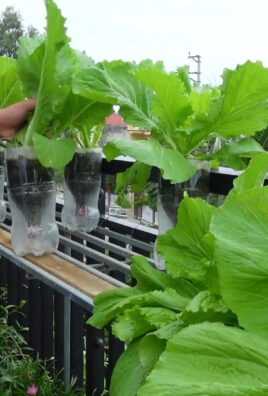
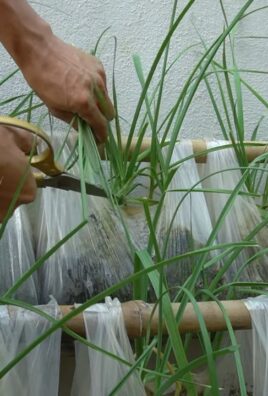
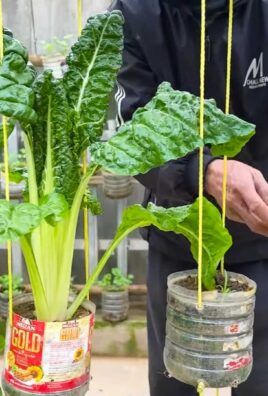
Leave a Comment